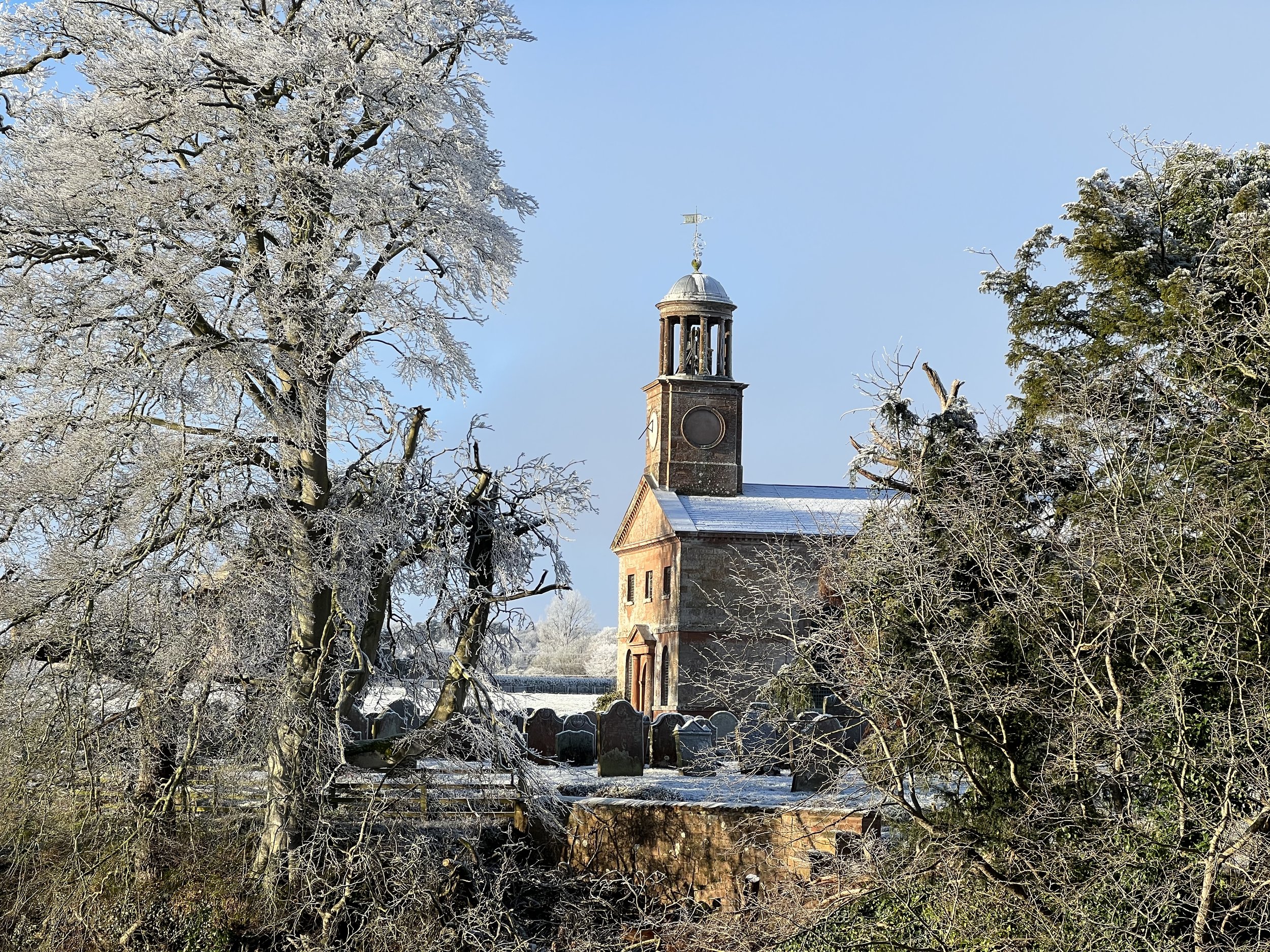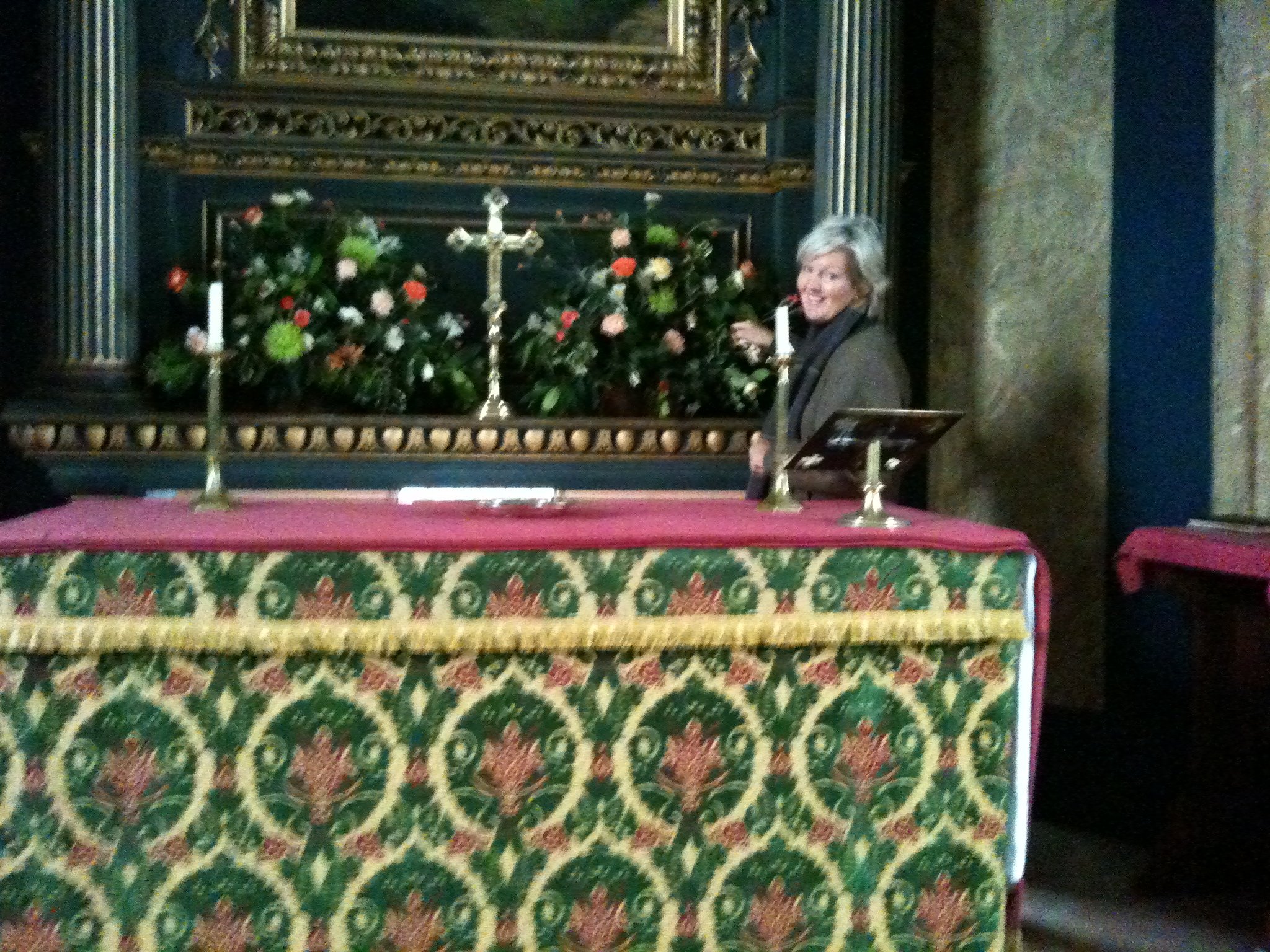On the northern frontier of the Roman Empire, our parish has a long, turbulent history. Once part of the ancient Kingdom of Northumbria, for nearly 500 years it lay in the battlelands of England and Scotland.
Although some practice of Christianity did continue after the roman occupation ended in the 4th century A.D. this was a time of anarchy. Christianity was only re-established throughout the area by the efforts of Celtic missionaries in the succeeding centuries. The origins of Kirkandrews Church may lie in one such re-established Christian community.
Until the suspension footbridge was built in 1877 by Francis Morton of Liverpool, parishioners from the Moat side had to cross to the Church by ferryboat. Three churches are known to have existed on the site.
The First Church - Kirkandrews Church was gifted in 1165 to Jedburgh Abbey together with the Priory of Canonbie by the Norman Baron of Liddel, Turgot de Rossedale. During the 13th Century the river Esk formed the boundary between England and Scotland but by the following century England was laying claim to a tract of land between the rivers Esk and Sark as far as Canonbie, hence the name Debateable Land. As the area’s population increased and turned to cattle raiding and reiving, the rule of law broke down and the area became increasingly wild and lawless.
Notorious Graham clan members built their Pele Towers in our parish along the lower reaches of the Esk and Sark; that which Tom Graham built about 1550 stands opposite the Church.
After negotiations with the French ambassador intervening as a potential arbitrator, the line of the Border across the Debateable Land was finally settled in 1552. The settlement resulted in the transfer of some 60 square miles of land to the parish of Arthuret (Longtown) in England. The settlement did not bring peace; the activities of the Reivers continued; the Church was in ruins; the practice of organised religion ceased; and as no priests were available to conduct marriages the custom of hand fasting evolved.
The Pacification of the Borders - After the Union of the Crowns of England in 1603 King James immediately acted to pacify and bring order to the Border area. George Clifford, Earl of Cumberland was appointed Lord Warden of the West and Middle Marches with power “to subdue the rebellious persons therein”. Many of the Graham families were transported at public expense to Ireland and the Low Countries An exception was Richard Graham son of Fergus Graham of Plump near Springfield who sought advancement at the English Court in the service of the Duke of Buckingham. As a reward for his efforts George Clifford was granted of most of the old barony of Liddel Lands. On George’s death these passed to his brother Francis Clifford. Francis then increased the holding by acquiring a further 15 square miles of Debateable Land.
Meanwhile Richard Graham prospered at Court. When Charles I succeeded his father King James Richard became an Equerry to the new King and in 1628 was able to purchase the Barony of Liddel and Debateable Land holding from Francis Clifford.
Richard remained a loyal servant of the King throughout his life fighting for the royalist cause at the Battle of Edge Hill and later accompanying the King to his execution in Whitehall. As the King stepped onto the scaffold he handed Richard his Bible .
The Second Church - In 1631 the Rector of Arthuret petitioned for the rebuilding of Kirkandrews Church so that the Kirkandrews inhabitants could receive religious instruction. Because of the need to cross the Esk they were unable to attend Arthuret Church. In response to the Rector’s request King Charles I granted Sir Richard Graham of Esk, as Richard Graham had then become, power to refound a Church “where the Church of Kirkandrews formerly stood”.
Rebuilding began in 1635; it was completed two years later. A new Rector was instituted on 28 August 1637 and the Church was provided with a Communion Cup and Cover. This Cup and Cover bearing hallmarks of York 1637 is on display in Carlisle Cathedral Treasury.
The only information on the rebuilt Church is from the early 18th century and describes it as “standing on props” ; apparently it had no steeple, belfry or bells but the inside had a decent choir, well railed communion table, uniform seating and floor. Unfortunately the construction had been undertaken in ”a thoroughly shoddy manner” and the Church needed frequent and expensive repairs throughout its use.
The Present Church - In 1775 the present elegant Georgian Church was built on an unusual north south alignment, possibly due to lack of space on the site. The builder was the Rector, the Reverend Doctor Robert Graham, a descendent of Sir Richard Graham of Esk who had inherited the Netherby Estates. Dr. Graham was celebrated for his development of Longtown and the agricultural improvements he introduced on the estate.
Dressed triangular stones in the churchyard wall indicate they once formed part of a gable end suggesting that the stone from the Church of 1635 may have been re-used to build the wall.
The interior of Church was simple with a Florentine ceiling, chequer-board tinted glass window panes, lime washed walls, a high pulpit and box pews. In 1892/4 this simple interior was remodelled in the painted and gilded Baroque style by the distinguished church architect Temple Moore of Hampstead, London who trained under George Gilbert Scott and who himself later trained Scott’s son Sir Giles Gilbert Scott. The remodelling cost £1850.
Between 1993 and 2008 major repairs, including the damage caused by an earth tremor in 1988, renovations and redecoration were carried out in three phrases, The Florentine ceiling and walls were restored to their original Georgian colours with the help of English Heritage. The total cost was £70,000.





